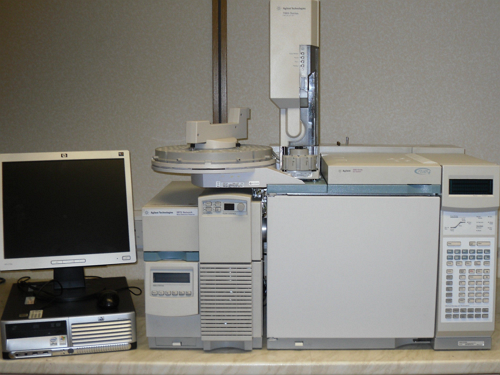Analysis of Palmitic Acid
Palmitic acid (hexadecanoic acid) is a long-chain saturated fatty acid of 16 carbon atoms.
Palm oil is the richest source of palmitic acid, with 40-48% fatty acid content. Cottonseed oil, groundnut oil, soybean oil and cocoa
butter are other significant plant-based palmitic acid sources.
Seaweeds contain palmitic acid within a range of 10-45%, and seasonal variation in the palmitic acid content has been observed.
The palmitic acid content in oleaginous yeasts varies from 16 to 33%. Some cyanobacteria and microalgal species that belong to the Chlorophyceae family also tend to accumulate palmitic acid in high concentrations.
Palmitic acid has been used as an additive in various formulations ranging from household cleaner to warfare agents. Sodium palmitate has been used as a surfactant in cleaning, detergent and personal care formulations.
Compared to other forms of vitamins, the bioavailability of palmitate esters of vitamin A and vitamin C is high; hence they are effective vitamin supplements. Vitamin palmitate esters have also been used as antioxidants and cosmaceutical agents.
Seaweeds contain palmitic acid within a range of 10-45%, and seasonal variation in the palmitic acid content has been observed.
The palmitic acid content in oleaginous yeasts varies from 16 to 33%. Some cyanobacteria and microalgal species that belong to the Chlorophyceae family also tend to accumulate palmitic acid in high concentrations.
Palmitic acid has been used as an additive in various formulations ranging from household cleaner to warfare agents. Sodium palmitate has been used as a surfactant in cleaning, detergent and personal care formulations.
Compared to other forms of vitamins, the bioavailability of palmitate esters of vitamin A and vitamin C is high; hence they are effective vitamin supplements. Vitamin palmitate esters have also been used as antioxidants and cosmaceutical agents.
Click here to place an order for determining Palmitic Acid.
Request a QuotePalmitic Acid Content
Analysis Packages for Palmitic Acid
Equipment Used for Palmitic Acid Analysis

Gas Chromatograph with Mass Spectrometer (GC-MS)
Our lab has an Agilent 6890 gas chromatograph (GC) coupled to an Agilent 5973 mass selective detector (Mass Spectrometer).
Additional Material
We can determine the Palmitic Acid content of biomass, click here to learn more about our various biomass analysis methods.
We can determine the Palmitic Acid content of seaweed, click here to learn more about our various methods for analysing seaweed.
We can determine the Palmitic Acid content of microalgae, click here to learn more about our various methods for analysing algae.
We can determine the Palmitic Acid content of seaweed, click here to learn more about our various methods for analysing seaweed.
We can determine the Palmitic Acid content of microalgae, click here to learn more about our various methods for analysing algae.





